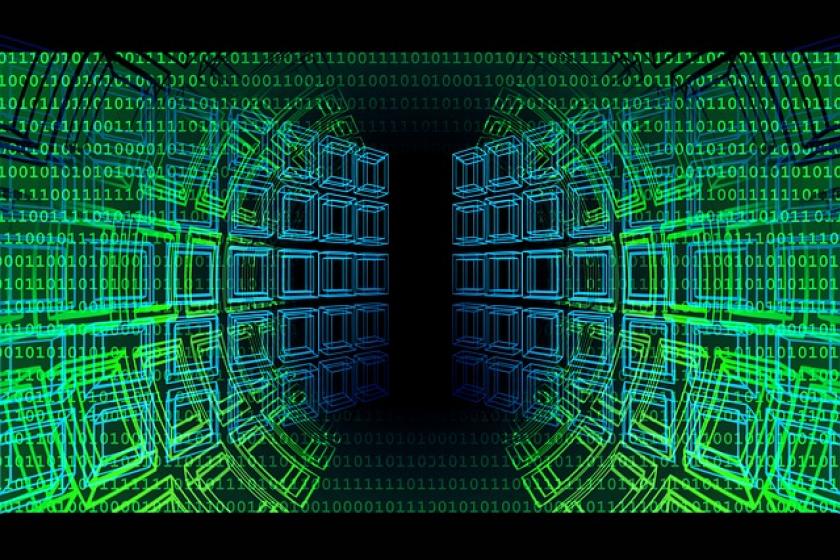Using AIOps and Digital Experience Monitoring to Support Converged NetworksUsing AIOps and Digital Experience Monitoring to Support Converged Networks
Combining AIOps and DEM solutions with a converged network and security platform allows businesses to grow and adapt to evolving business needs while maintaining optimal performance, protection, and availability.
October 20, 2022

As networks expand, the need to deploy more network and end-user security solutions across an increasingly distributed network can quickly become a management nightmare and impact employees’ user experience, slowing down productivity. Security teams are focused on securing the business at all costs, which imposes friction on employees as they work to grow the business and accelerate their organization's digital transformation.
And with an average of 45 solutions from dozens of vendors in place, IT overhead increases as they struggle to maintain clear visibility and control across their security architecture. Often, these tools are point solutions, meaning they operate in isolation while monitoring a specific network segment and require the hand-correlating of information and policies across a multi-console environment.
This fragmented security architecture does not just create friction for IT. It also impacts the end-user experience, so much so, that network teams are now challenged to ensure a positive user experience for employees while maintaining security standards. That’s because while users need instant access to applications and other resources from anywhere on any device, legacy security systems struggle to adapt to today’s rapidly changing environments. Agile business and user demands are either tamped down to comply with rigid security capabilities or security gaps emerge as security solutions fail to adapt to dynamic business environments.
This conflict of priorities between the infrastructure/network and security teams can prevent businesses from maintaining optimal digital acceleration that can impact competitiveness, productivity, and user experience. While these teams clearly need to work together for the success of the business, attempts to create overlay solutions to manage and understand the user impact of siloed systems are often incomplete and homegrown. And as a result, according to a recent Fortinet survey, many IT teams spend up to a third of their time managing and troubleshooting these workarounds rather than focusing on accelerating the business.
Converging security and networking
One effective way to limit the impact of security on end-users is to reduce vendor and solution sprawl through consolidation. Settling on a common security platform deployed widely across physical and virtual environments allows IT teams to standardize configurations and maintain consistent policy enforcement. Because it can be deployed anywhere, this universal framework can span end-user workflows from anywhere to anywhere to secure the business while limiting the impact on employees.
In many cases, this approach also reduces the number of separate consoles required to manage and optimize a distributed security infrastructure. The challenge is that not all security platforms are alike. Many are simply a collection of disparate security acquisitions wrapped together with a management shell, reproducing the same problem the organization was trying to resolve. What’s needed is a security platform comprised of deeply integrated solutions that provide true interoperability and effective, centralized management regardless of where it is deployed or what services it provides.
But management is only half of the story. Given the rate at which the network’s attack surface is expanding and the speed at which today’s threats can infiltrate a network, security systems must also rely on automation and interoperability to effectively detect and respond to attacks. This can only be done when separate security tools can function as a unified solution.
Complicating the picture further, security can no longer live in a bubble. Today’s networks are constantly adapting to changing factors, and most security solutions—even broadly deployed platforms—struggle to keep up. As a result, networking and security must also converge to maintain availability, performance, and user experience.
Organizations must combine security with campus switching, LAN and WAN edge networking, network performance, and digital experience monitoring into a single, unified architecture. This approach ensures that every change to the network not only considers the impact on user experience but also automatically includes the protections those users require.
But that’s just the beginning.
Use AIOps to monitor and manage converged networks
Not only must networking and security solutions work as a unified system, but they must also function at the speed of business. Given the tremendous volume and complexity of data generated by modern networks, human analysts and traditional automation processes can no longer keep up. AIOps (Artificial Intelligence for IT Operations) uses machine learning and artificial intelligence to detect and resolve issues before they impact operations and users.
AIOps enables IT teams to easily monitor various data points, establish baselines and find optimal paths and recommendations to ensure the network meets and exceeds SLAs. Critical outcomes of leveraging AIOps include reduced technical requirements, faster root cause analysis for troubleshooting and resolving issues, reduced MTTR (mean time to recovery), improved network and application availability, and, of course, improved user experience.
Uplevel traditional performance monitoring to Digital Experience Monitoring
Adding DEM (Digital Experience Monitoring) technology to the NOC/SOC complements AIOps by extending visibility across all infrastructure, applications, and business processes. According to Gartner, DEM is “used to identify technology performance issues and align application performance to support business objectives.” This data provides critical insight into an organization’s operational efficiency and potential impact on business outcomes.
DEM achieves this level of insight by leveraging telemetry from multiple systems:
End-user monitoring measures laptop and desktop, network, and application performance
Network monitoring measures network device health and performance across all network edges
Infrastructure monitoring measures the performance of application servers, whether on-premises or in the cloud
Synthetic Transaction Monitoring (STM) proactively tests business-critical applications from several vantage points to ensure consistent performance no matter where users connect. STM even brings performance visibility to applications IT teams traditionally have no control over, like SaaS applications
This real-time data enables the DEM system to pinpoint potential problems. It can then alert the Systems Manager or Site Reliability Engineer (SRE) when a potential performance issue or event is identified and provide detailed information so immediate corrective action can be taken before users are impacted.
DEM can also be expanded to monitor and support today’s hybrid workforce by deploying agents on virtual and physical endpoints. This user experience data allows IT teams to maintain and improve productivity and engagement and ensure “workforce digital dexterity” so users experience the same intuitive and responsive work environment, whether on- or off-premises. And by tracking the data path between the campus, branch office, home network, and on-premises and cloud-based services, DEM can provide critical, real-time insight into problems that can be used to improve uptime and user experience.
These DEM metrics must also feed back into the expansive security architecture. By leveraging the convergence of the network and security, DEM metrics help security systems see, adapt to, and protect employee workflows end-to-end to better secure the business while optimizing user experience.
Today’s businesses require a fully converged solution
The digital acceleration efforts transforming today’s modern business require completely rethinking networking and security. Updating legacy systems is not enough. Optimizing user experience and business outcomes requires converging security and networking into a unified solution that can adapt and scale at the pace of business. It also requires accelerating and automating the detection and response to disruptive issues in real time, whether network- or security-related. Combining AIOps and DEM solutions with a converged network and security platform allows businesses to grow and adapt to evolving business needs while maintaining optimal performance, protection, and availability.
Kimberly Becan is Director of Network Operations Solutions at Fortinet
Related articles:
About the Author
You May Also Like




